Media | Articles
My Winter Projects Are Springing Forward…Finally
Even if you don’t live in northern climates, a “winter project” encapsulates the right way to go about a project. It sets both a goal and a deadline in two tidy words, capturing a task or group of tasks that will be completed during the cold months when, at least in my home town of Traverse City, Michigan, driving is a salty, slippery chore.
This year I was especially careful to set concrete goals for my winter projects. Imagine my surprise when the first truly measurable, visual progress came not on a snowy evening but as I was working with the garage door open, while my wife was planting in the garden. Was I lazy, or do I need to redefine what progress means?


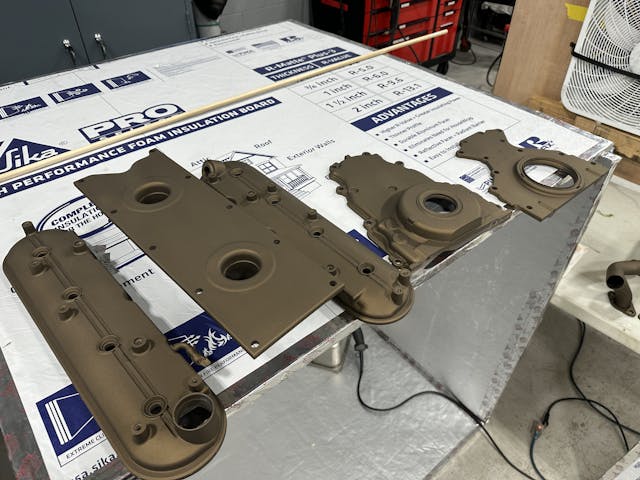
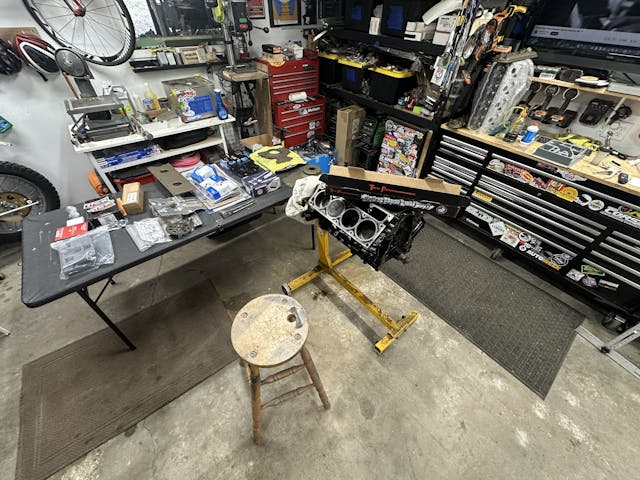
Somehow, I didn’t pick up tools until this month. The two big projects I’m plugging away on are the 1988 Honda XR600R motorcycle build, which is nearing final assembly, and the 1985 Corvette, which is in the very early stages of receiving an LS engine swap. I’m on a deadline for the Honda, because it needs to be ready for an event in November, but the Corvette project plods along at a pace dictated by finances. Luckily, it’s gone pretty quickly in the last few weeks.
My strategy for keeping up with the bike and the Corvette is to alternate exciting projects with more frustrating or menial ones, so that something fun is either happening or one step away. In the last few weeks, I’ve been transforming the 6.0-liter LQ4 truck engine into something more appropriate for a sports car—or, at least, something with a little more sound and power than the tired, 120,000-mile L98 currently under the hood. The key to success has been knowing when to stop: For instance, the crankshaft and pistons are staying in the block. There’s no need to pull those for the horsepower levels and intended usage this build is going to see. What did change was … just about everything else.
I purchased the grimy V-8 last fall, just a few weeks after I bought the Corvette, because the engine was complete and hadn’t been screwed with. I got a lot of parts I won’t need in the deal, but I also ensured that a handful of small bits that I will need are still there. While this is my first engine swap, it’s not my first big project, and I know that, if I’m not careful, $10 here and $30 for special hardware or doodads will absolutely wreck the budget. With a pile of parts secured, the first task was research.
Marketplace
Buy and sell classics with confidence
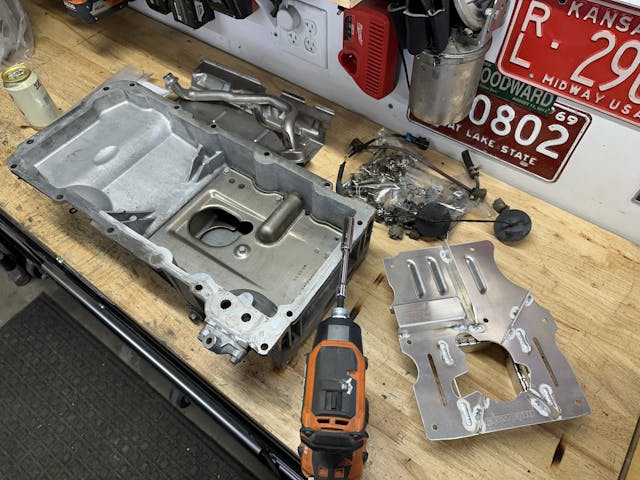

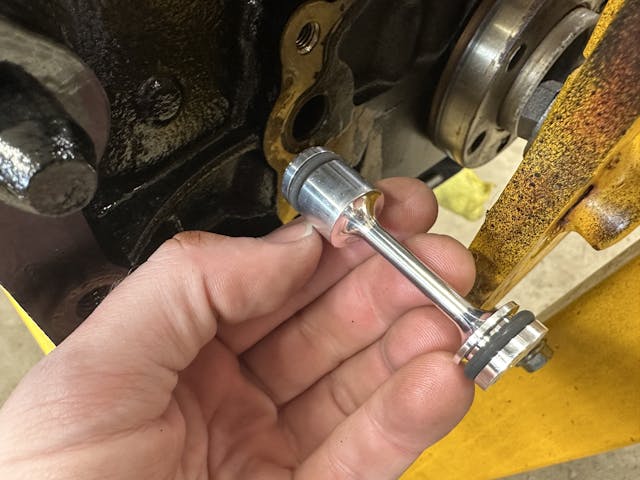

Little did I know that research would take all winter. I talked to friends, trusted sources, and experts to compile and then purchase a list of parts. Not until recently did I begin the next step: Cleaning. A pressure washer took care of the greasy buildup on this engine, which spent its previous life in a plow truck.
After giving the engine block and oil pan a fresh coat of paint, I slid a Tick Performance camshaft down through the cam bearings. I bolted on the cam gear after hanging a new timing chain, then blocked those in with a high-pressure Melling oil pump to the front of the engine block. I set Morel lifters into new lifter trays before lowering them into the lifter bores. Over them, I clamped the rebuilt cylinder heads onto new MLS cylinder head gaskets just before I rotated the whole operation on the stand and bolted on the oil pan (with a new baffle suited for the road course or autocross), timing cover, and rear cover. The last now hides a new aluminum oil “barbell.” New OE-spec gaskets and sensors rounded out the package before I installed a set of longtube headers and Dorman LS2 intake manifold. With a throttle body, front damper, plug wires, and a dipstick, the engine should make a reliable, streetable, and no-nonsense 475 hp.

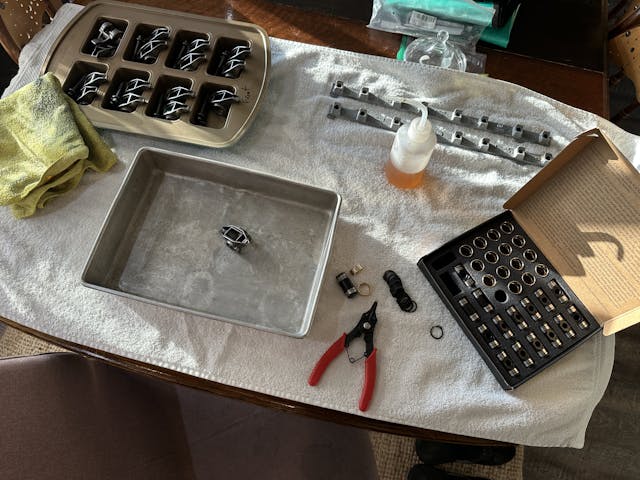
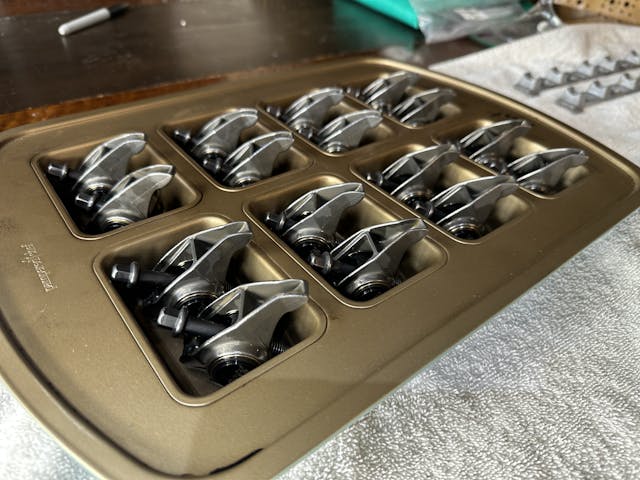
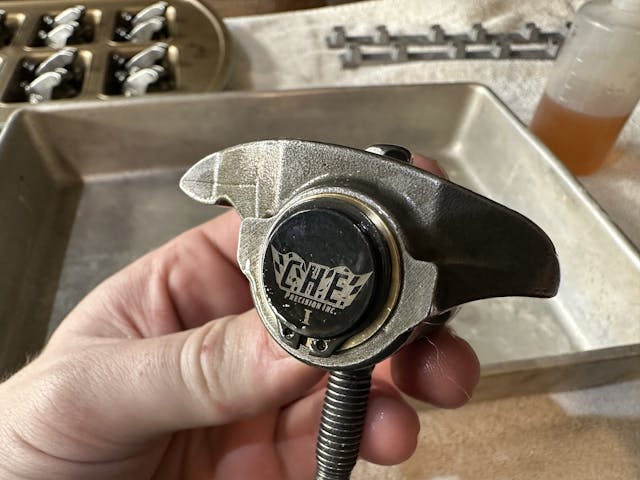
That all sounds pretty easy, and it mostly was. Hence why the assembly of the engine took about two weeks of evenings and most of each weekend. Selecting, ordering, and preparing those parts? That took the better part of three months. Whenever possible, I purchased parts used, refurbishing them before I even hosed off the engine or started to disassemble it. The cylinder heads and oil pan were both spotless and assembly-ready weeks before they were needed.
An eagle-eyed commenter noticed the heads I chose in a previous article. During assembly, I swapped the 317 truck cylinder heads with 706 castings. These come with a risk, but one I’m willing to take in order to get a compression ratio of a little over 10.5:1, which will pair really well with the cam. The Castech 706 heads have been known to crack and leak coolant. Mine appear to be fine, but I really won’t know until the engine is running. Buying them was an easy decision—I found this set locally, for $50, and they required no more work than any other heads I would have purchased: just a quick pass by my local machine shop to clean up the gasket surface. I’ve never described this project as a “budget build” and probably never will, but the funds are not unlimited.
Normally this isn’t how I do projects. I tear things apart and make a comprehensive parts list and a plan before ever starting on individual systems. While Project Corvette is just one attempt at a slight change in method, I’m pretty impressed with how rewarding the last few weeks have been. It was only when wiping down tools and re-packing the box after measuring and placing the order for pushrods that it hit me: I had suffered through the tedious research for each part and piece in one big slog that, in hindsight, had been quite dreary—or, at least, poorly timed.

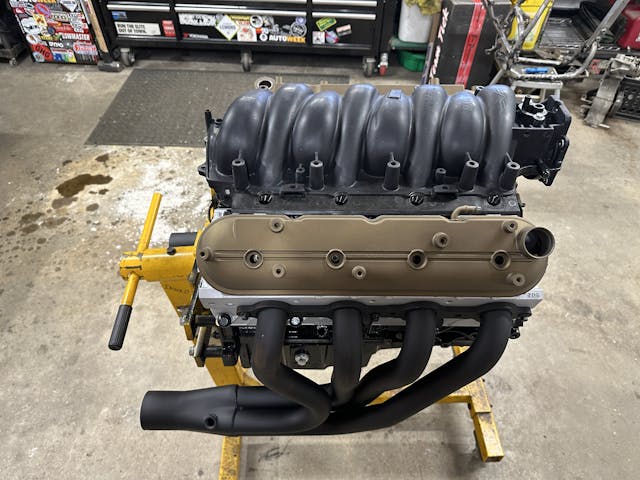
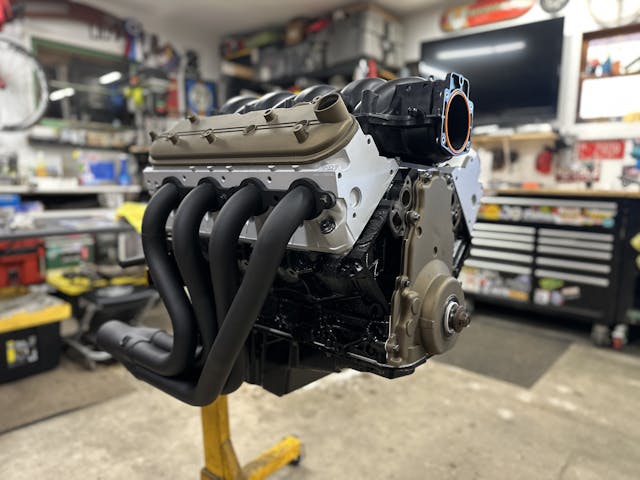
I began with the research step, hours and hours of compiling information—one of the least rewarding parts of doing a project for me—right when I would be cooped up under the cover of snow. Yeah, the engine-swap was a winter project, but apparently I needed to start it in September. I’m lucky enough to have a heated workshop, and yet I spent most of the winter at the dining room table. With just slightly better planning, I could have been wrenching, not reading.
Regardless, as the snow has disappeared, this winter project has taken a big leap forward. The LS still needs a lot of work, and more parts, but it looks like an engine—and a darn good one, if I say so myself. Is it really that big of a deal if visible progress came at the same time that the birds began chirping outside? Hardly.
We’ll see if I change my tune as I dive into wiring the engine over the next few weeks.



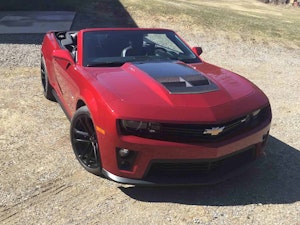




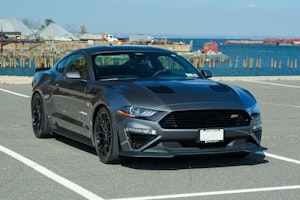


















Looks great! I like your Cerakote parts especially. I’m wrapping up the L77 build in my 2014 Caprice currently and it’s good to see I caught a lot of the same stuff you are as far as “budget but necessary” type mods – oil barbell, oil pickup tube brace, CHE rocker trunnions, etc. Whens the transplant set to happen?
I’m hoping to sort out a few more chassis items and run this engine on a run stand prior to pulling the L98 from the Corvette. Trying to do as much work and research out front of taking a currently running and driving car off the road. More directly, late summer is goal for having the LS bolted in. Running and driving before winter with any luck.
I also really like the Cerakote finish – reminds me of Magnesium with the Dow-7 finish.
Heck, I’d do the whole engine in it, as I like my engines to be one color.
Good luck on the heads – they couldn’t be checked for cracks ? Good idea to run it before installation – make sure to build temp !
Everything is looking good. I like all the new stuff on your engine. It’s going to look good under the hood of your Corvette. I’m still looking forward to a dyno plot.
I almost completely abandoned my “Winter” projects, because they all had price tags involved, and I decided that putting all of those funds into one basket in order to get my Spring/Summer project completed. Next Winter is gonna be super busy!